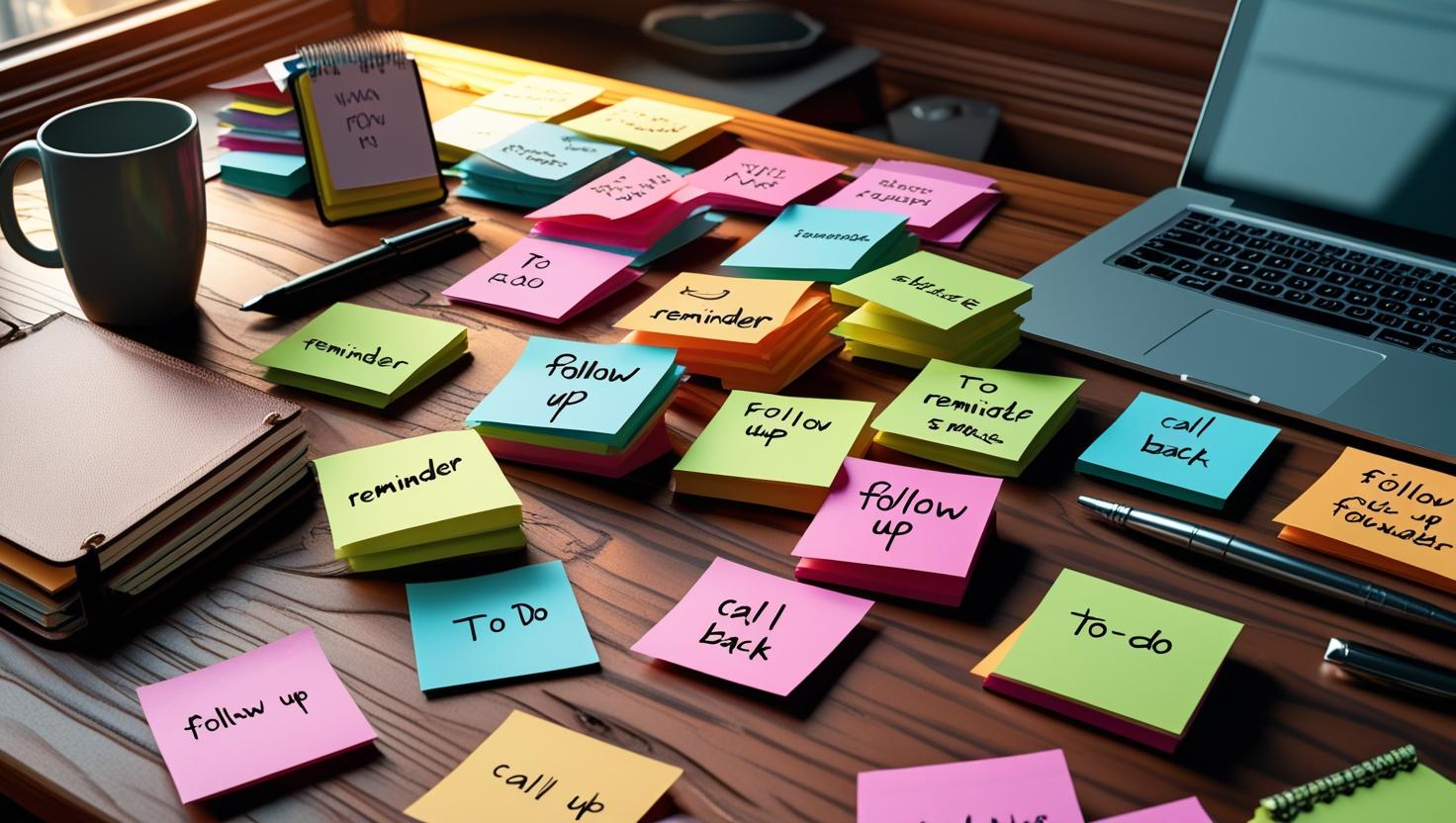Follow-up or Fizzle Out?
You’ve spent hours crafting the perfect cold outreach message. You’ve fine-tuned the offer, the subject line, even the call to action. And still — nothing. No reply. Just silence. It’s a frustration that founders and sales teams know all too well.
If your first email isn’t landing, it might not be your timing, it might be your copy. We explored that in more depth in Cold Email Isn’t Dead – It’s Just Badly Written.
The truth is, in most lead generation strategies, it’s not the first email that gets the response. It’s the follow-up. But tread too heavily or send another lifeless template and you’ll be flagged, ignored, or worse, deleted.
In B2B copywriting, where trust is hard-won and attention is short, the follow-up is your second chance to re-engage cold leads with value, clarity, and relevance. This article shows you how to build a follow-up system that feels personal, not pushy. One that sparks conversations, not complaints.
In 2023, nearly 45.6 percent of all e-mails worldwide were identified as spam – Statista
Why Your Follow-Up Strategy Might Be Working Against You
Most follow-up strategies fail not because they’re too light, but because they’re too lazy. Sending a second email within 24 hours, repeating the same message three times, or relying on stale templates might seem like standard cold outreach practice, but it’s more likely to get you archived than answered.
B2B buyers are busy. They’re juggling meetings, deadlines, and a daily barrage of promotional noise. That means decision fatigue and inbox overwhelm are real hurdles your lead generation strategies need to account for.
When follow-ups feel rushed or impersonal, they don’t just go unnoticed. They actively erode trust and damage your brand. Poorly timed messages and generic content are the fastest way to turn interest into irritation.
Cold outreach isn’t a numbers game. It’s a credibility game. As Mark Roberge, Former CRO at HubSpot and Senior Lecturer at Harvard Business School, puts it, “Sales is not about selling anymore, but about building trust and educating.” The good news? A thoughtful, well-written follow-up can be the edge that sets you apart.
Cold Email Cadence: Finding the Right Pace
Getting your follow-up timing right is one of the most overlooked parts of cold outreach. While some situations, like event organisers securing last-minute sponsors or publishers selling ad space before a deadline, justify a tighter sales email cadence, most B2B services don’t come with that level of urgency. If your offer isn’t time-sensitive, following up every three or four days can feel excessive and quickly wear thin. A better approach is spacing your follow-ups at least a week apart, giving your prospects time to consider without pressure.
A five-touch sequence might look like this: Day 1 (initial outreach), Day 8 (first follow-up), Day 15 (value add), Day 22 (case study or insight), and Day 30 (final check-in). This kind of follow-up schedule respects the natural pace of B2B decision-making, where buyers often need more time and internal alignment. Knowing when to step back is just as important as knowing when to follow up. Pushing too hard doesn’t accelerate trust; it erodes it. Strategic pacing, paired with thoughtful B2B copywriting, can turn a cold lead into a warm conversation without ever feeling like you’re chasing.
Cold Email Tone: Be Persistent, Not Pushy
When it comes to follow-ups, tone often matters more than timing or even the subject line. In cold outreach, the way you say something can either open doors or shut them fast. A message that feels needy, aggressive, or overly rehearsed is more likely to be ignored, or worse, flagged. The best follow-ups feel human. They’re rooted in empathy, relevance, and timing. If someone didn’t reply to your first message, it doesn’t mean they weren’t interested. It may just mean your message got buried.
Instead of chasing, try sparking curiosity: “Not sure if this is something you handle or if it’s better for someone else on your team. Happy to send it their way if so.” Or offer value without expectation: “I remembered our earlier exchange and thought this might be helpful. Feel free to take a look if the timing’s right.”
These approaches feel personal, not pushy. They signal that you understand the rhythm of B2B decision-making. In lead generation strategies, especially those driven by B2B copywriting, the tone is a quiet but powerful differentiator. Let’s put it this way, if your follow-up feels like it was written by an intern with a quota, it probably sounds like it too. Speak like a peer, not a pitch.
How to Re-Engage Cold Leads Without Sounding Desperate
If someone engaged at some point, replied to your first message, took a quick call, or showed interest but has since gone quiet, you’re not starting from scratch. But you’re not quite in an active conversation either. These lukewarm leads are often overlooked in cold outreach, yet they’re some of the most valuable to re-engage. The key is to follow up without sounding like you’re chasing.
Start with permission-based messaging. A line like “Not sure if this is still something you’re exploring, but thought I’d check in just in case” gives them space to opt out without feeling pressured.
You can also change the angle of your follow-up. Try asking for feedback: “If you’ve pivoted or if I’ve missed the mark, I’d be happy to see how I can make this more useful.” Or offer something new: “We’ve made a few changes since we last spoke — thought this might be more relevant now.” Or, when the timing feels right, send a break-up email that leaves the door open: “Happy to close the loop for now unless this is something to revisit down the line.”
Changing the tone, subject line, or even the medium (from email to LinkedIn, for example) can help break the pattern and prompt a response. In effective lead generation strategies, thoughtful B2B copywriting helps you reconnect in a way that feels human, not transactional.
Tools and Automations That Don’t Make You Sound Like a Robot
Automation can save time, but in cold outreach, how you use it makes all the difference. Some email marketing automation tools are built with personalisation in mind, allowing you to scale your lead generation strategies without sacrificing tone or relevance. The key is to avoid sounding like a robot. Use variable fields to tailor your messages, add brief custom notes that show you’ve done your homework, and skip subject lines that scream automation.
Even the best tools can damage your credibility if used carelessly. One off-brand or mistargeted message can undo weeks of good B2B copywriting. Think of automation as an assistant, not a replacement for judgment. Done right, it helps you follow up consistently while still sounding like a person. Done wrong, it can tank your chances before you’ve even started a conversation. For more guidance on choosing the right platform, explore our guide to the Top Marketing Automation Tools for B2B Success in 2025.
Final Thoughts: Keep the Door Open, But Don’t Camp on the Porch
Not every lead will reply — and that’s completely fine. The goal of cold outreach isn’t to chase every prospect until they block you. It’s to stay on their radar with relevance, patience, and professionalism. The most effective lead generation strategies respect timing, personalise every nudge, and strike a balance between persistence and restraint. If your follow-up efforts aren’t landing, take a closer look. There’s often one weak link in the sequence that can be tightened with stronger B2B copywriting or a better-timed message. Keep the door open, but don’t linger too long on the doorstep.
Quick Recap:
- Space follow-ups by at least a week unless urgency justifies more
- Use human language, not templates
- Focus on relevance, not repetition
- Re-engage leads with value, not desperation
- Use tools that enhance your message, not replace it
Need help writing cold outreach sequences that actually convert?



